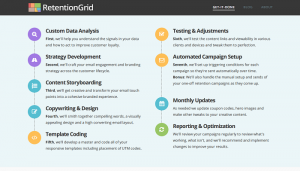COVID-19 has already shifted the way the world works, but that shift is unlikely to go anywhere once a vaccine rolls around. The pandemic has caused worker productivity to drop by over 7%, and that number is sure to grow unless employees and companies alike adopt new on-the-job strategies.
The coming months will likely see a constant waxing and waning of business productivity: the transition to long-term remote work will be a bumpy one for many, and companies that can reopen their doors might have to close them again if there’s a second spike in cases. Once things even out, however, some lasting trends in productivity are likely to emerge.
As always, tech will be one of the biggest deciding factors when it comes to future of productivity — here’s how it might affect things:
-
The need to disconnect
Even before COVID-19 emerged, the right for workers to disconnect was a hot topic. The ubiquity of laptops and smartphones made it nearly impossible to ever fully leave the office — something that can have a significant impact on mental health and productivity. Now that more workers than ever are homebound, disconnecting has become even more difficult than ever before.
People are starting to look for tech that makes it easier for them to separate their work lives and their personal lives. One of the biggest developments along this line is the shift to better managing smartphones and notifications. Many adults are taking note of kid phones that are made for their children and have limited smartphone abilities. Adults can benefit from incorporating some of those parsed down smartphone functions to help them disconnect after work.
A 2019 study found that those who had the opportunity to disconnect after the workday was over experienced higher energy levels, better moods, and increased concentration on the job. Learning to disconnect — especially when working remotely — may require a bit of a learning curve, but it will pay big returns on productivity in the long run.
-
A decline in email
A staggering 23% of the average employee’s day is spent managing emails. Now that most offices have closed their doors, that number is likely much higher — and businesses are worse off because of it. The formalities of email writing make it an outdated medium that businesses need to abandon if they want to stay agile.
As companies realize how much time is being spent in email, it’s likely to become an increasingly obsolescent platform. Instant messaging platforms like Lync and Slack are becoming the norm, with nearly half of workers saying that using IM apps increases their productivity. Coupled with the rise of video chat, the rise in IM platforms seemingly guarantees that decline of email is in full swing.
-
Bolstered home tech
As soon as the pandemic struck, tech companies knew that they had to find ways to get their employees the digital infrastructure they needed at their homes. Shopify gave all of its workers a $ 1000 stipend to deck out their home offices, and Twitter wasn’t far behind in offering its workers full reimbursements for any work-from-home tech they bought.
What might be a small economic anomaly today is just months away from being a fully-fledged industry. Standing desks, high-quality webcams, boosted wifi, and dual monitors will be on the wishlists of many newly-remote workers this holiday season, and with them will come a huge jump in productivity. As employees’ homes start to look more like their offices, their output will follow.
-
The rise of virtual assistants
Millionaire and Shark Tank star Kevin O’Leary recently revealed that if he were forced to take on a side hustle today, he wouldn’t hesitate in choosing to be a virtual assistant; when one of America’s most iconic entrepreneurs gives a shout out to a growing occupation, it’s probably best to take notice. Last year, 2% of digital workers made use of a virtual assistant — a number that Gartner predicts will increase more than tenfold by 2021.
As the amount of digital jobs increases, so does the number of tasks that can be delegated to virtual assistants. The current economic flux in which the world currently finds itself means that there will be more people than ever looking to cash in on the gig economy, and the flexible nature of virtual assistantship makes it a prime job choice for many. As the demand for virtual assistants grows, so will the productivity of those using them.
Right now, uncertainty is the name of the game — no business is capable of predicting what will happen next. Even so, keeping an eye on growing trends in remote work patterns and digital transformation can give you a look into how productivity will be affected for years to come.
Business & Finance Articles on Business 2 Community
(20)





